Leviticus 235/84: Plough Monday ... and Terra Carta ....
Sunday celebrated now ready for work! Today's Daily Telegraph carries a picture of the Rev. Andrew Birks of Chidham, West Sussex, blessing the plough yesterday in readiness for today's traditional commencement of ploughing. That's well after women were back at spinning with their distaffs [Blog 231/84]. The farmer and the local community would in earlier times have been involved in the entire process. Nowadays there's not only division but contracting out of labour and the ploughing can be a priority straight after the harvest if the soil is not too hard but if it is, after the first rains. Winter wheat may well be in the soil and showing signs by autumn!
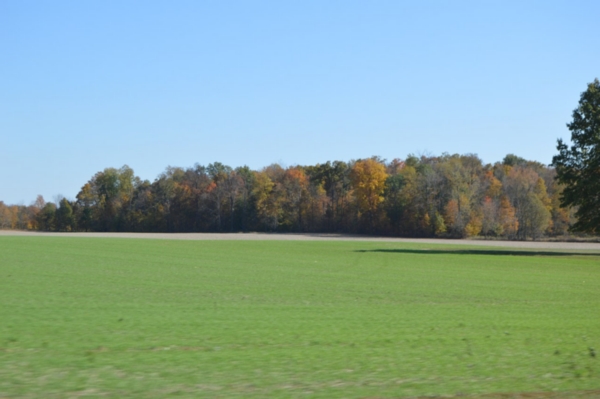
The earliest ploughing was done solely by man but then with animals as the source of energy using wood then later cast iron for the plough. The Industrial Revolution brought steam power to the task followed by evolving generations of tractors such as we know today. Whilst it was John Deere, meeting the challenges of the US prairies, who in 1842 developed the first steel plough James Small, a Scot from the Borders, had perfected the mould-board plough which turned the soil and greatly reduced the time needed to prepare a field allowing a farmer to work a larger area of land. The resulting pattern of low (under the mould board) and high (beside it) ridges in the soil forms water channels allowing the soil to drain. In areas where snow build-up causes difficulties, this lets farmers plant the soil earlier as the snow run-off drains away more quickly. Small's plough also turned over a much greater furrow, slice burying and mulching the weeds. And significantly Small’s plough saw the complete abandonment of wood, being cast in iron from the then recently opened Carron Ironworks near Falkirk. This ‘Scots Plough’ as it was known became the modern mould board plough.
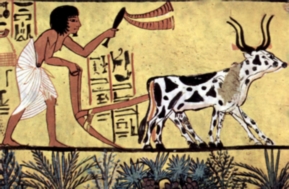 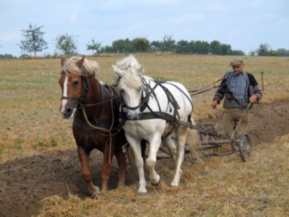
The plough was a symbol of peaceful coexistence. The Pilgrim Fathers' Harvest Festival each year in the US reminds us all too strongly of the significance of a successful harvest. The churches have traditionally celebrated each year's harvest and until the mid 20th century a quarter of the population was engaged in farming one way or another. Climate was always a concern hence the obsession with weather forecasts but so were plagues of locusts and war. So there can be little surprise in the prophecy of Isiah we often heard at school.
Isiah 2 vv3-4 Many peoples shall come and say: "Come, let us go up to the mountain of the LORD, to the house of the God of Jacob; that he may teach us his ways and that we may walk in his paths." For out of Zion shall go forth instruction, and the word of the Lord from Jerusalem. He shall judge between the nations, and shall arbitrate for many peoples; they shall beat their swords into plowshares, and their spears into pruning hooks; nation shall not lift up sword against nation, neither shall they learn war any more.
All this as HRH Prince Charles launches Terra Carta. The Prince couldn't perhaps have chosen a better moment to reflect on the protection of the environment. As the 'One Planet Virtual Summit' opens in Paris today he calls for a Terra Carta amongst today's barons - the Captains of Industry and the Services. He's turned the tables on his predecessor King John who had the Magna Carta forced upon him in 1215 and reissued by King Henry III in 1225!

Here's some detail from Prince Charles: Section 11. In support of game-changers and in partnership with academic and research institutions we must be encouraging accelerated investment into STEM knowledge and skills, Innovation and R&D in the following areas …: i. Sustainable transportation methods; ii. Biomimicry; iii. Advanced biofuels; iv. Sustainable Aviation Fuels; v. Green hydrogen; vi. Renewable energy storage including batteries; vii. Electric flight; viii. Nuclear fusion; ix. Retrofitting buildings for higher energy efficiency; x. Carbon-neutral construction and infrastructure (e.g. greening steel and cement and exploring bio-based alternatives; xi. Soil regeneration for enhance carbon capture; xii. Natural Capital resource monitoring, including by satellite; xiii. Green infrastructure e.g. electric charging station networks, aviation and shipping infrastructure.
 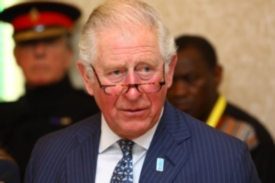 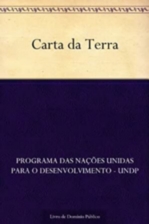
Would that list be the equivalent today of ICI's offer to me in 1961 … …. on its Arts Graduate Entry Scheme to head for Computing or Market Research? The route I took to market research then B School teaching had far less significance than where computing went which my long standing political friend, the late Ronald Yearsley, selected ab initio. Although I did migrate from market research into logistics and that field allied to computing has been transformational in our lifetimes as well as sharing in the metamorphosis of academic publishing, librarianship and online education …
Published Date: January 11th 2021
|





